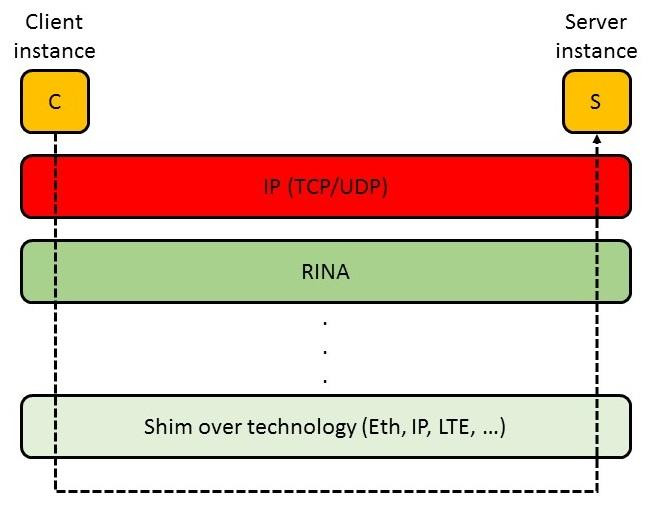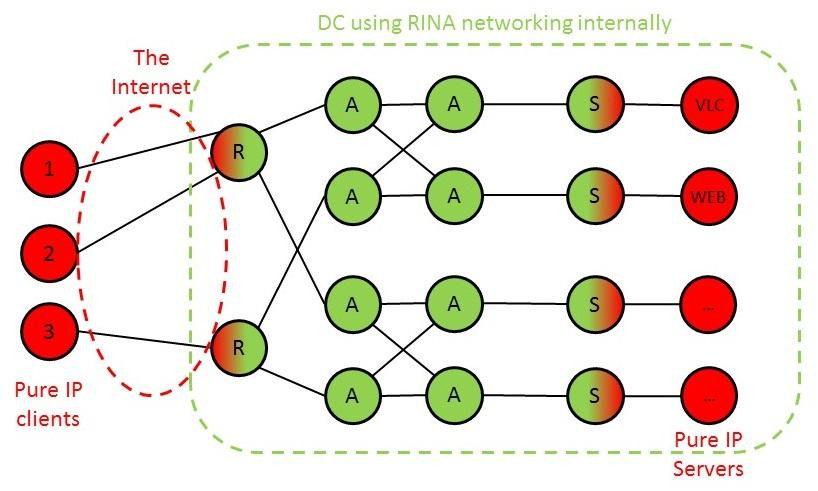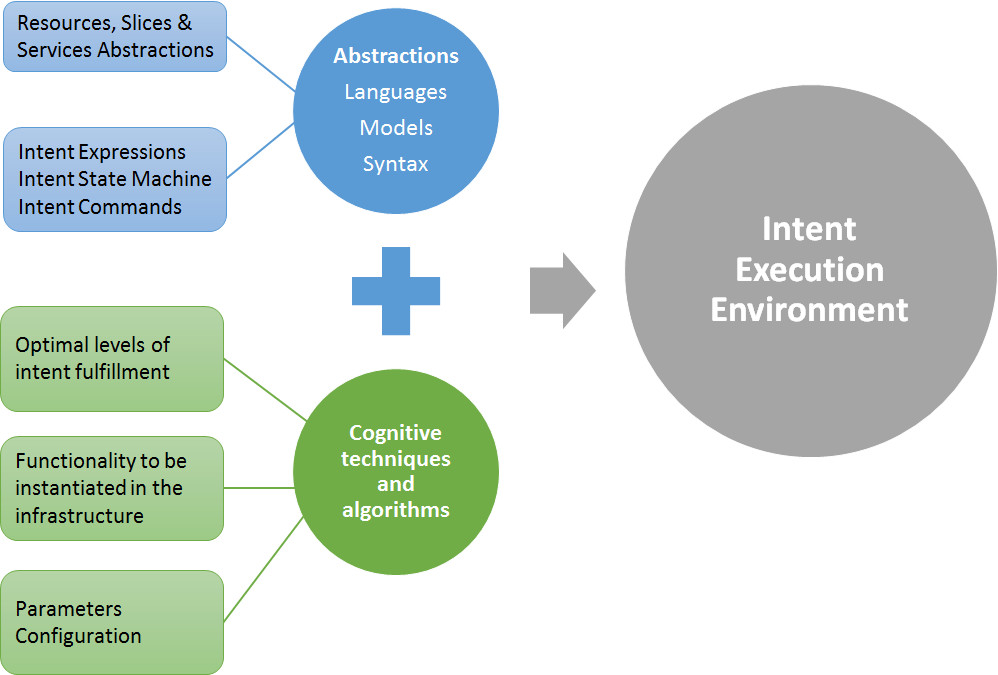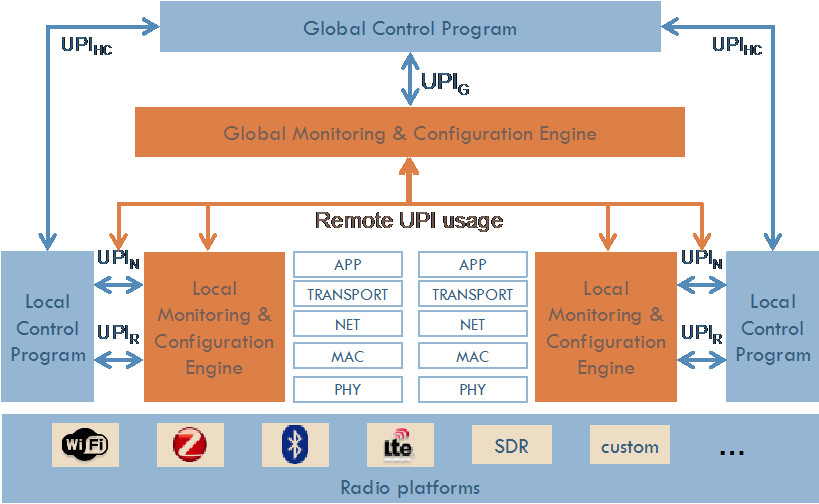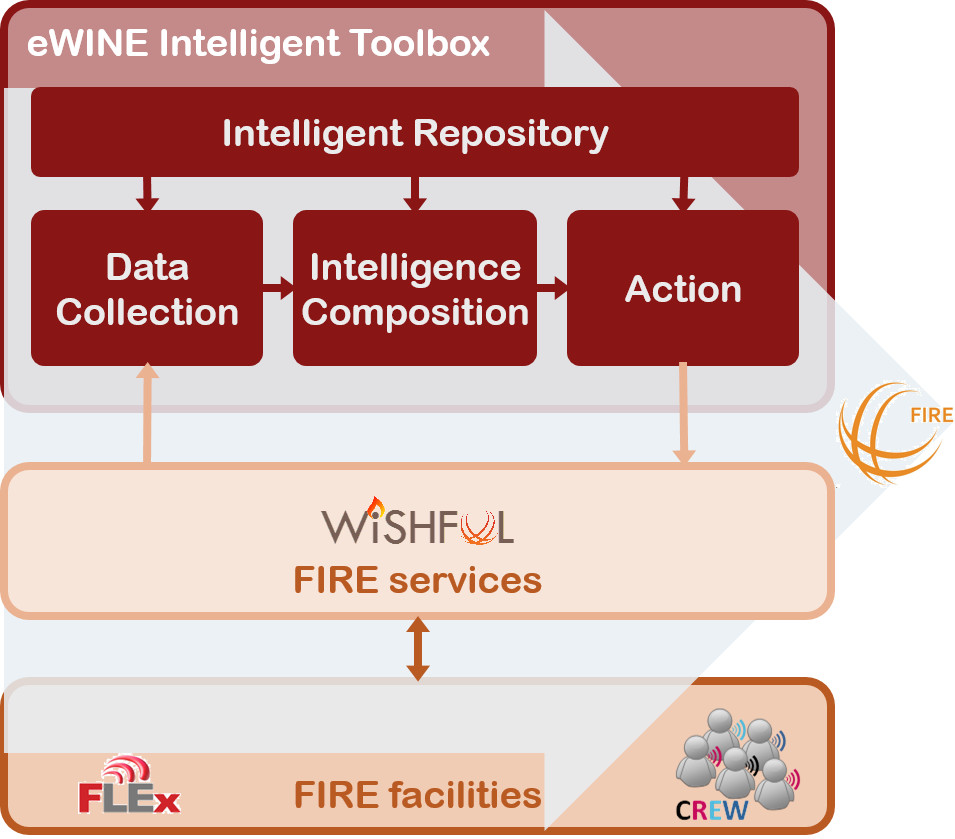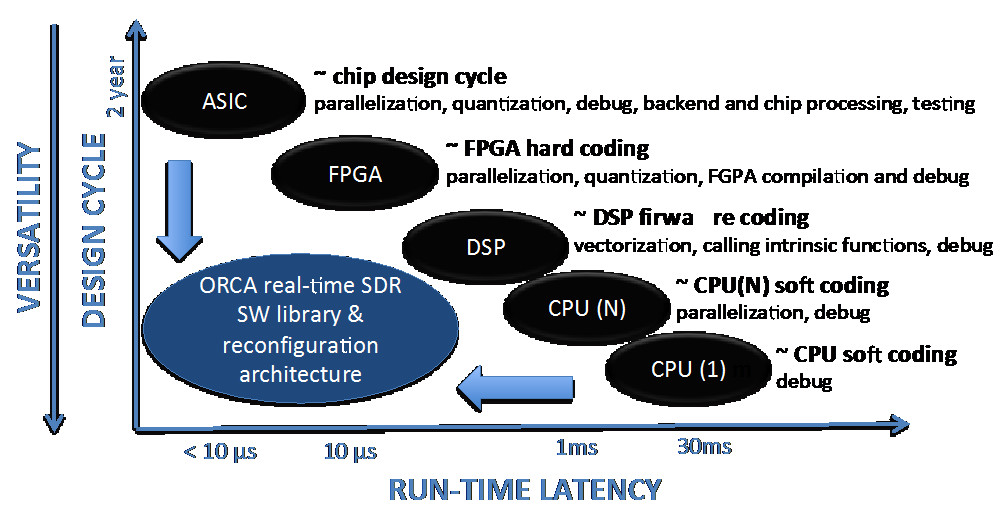IEEE Softwarization - January 2017
IEEE Softwarization - January 2017
A collection of short technical articles
Challenges of Network Slicing
By Neil Davies and Peter Thompson, Predictable Network Solutions
There are a lot of technology buzzwords about ‘network slicing’, but what do they really mean? In particular, what does a good ‘network slicing’ solution look like? What do we want from it? What capabilities are needed to deliver these requirements?
Addressing Key Challenges in 5G Networks with “Intent-Driven Networking”
By Eleni Giannopoulou, WINGS ICT Solutions, Athens, Greece; Panagiotis Demestichas, Vera Stavroulaki, University of Piraeus, Dpt of Digital Systems, School of ICT, Piraeus, Greece; Imen Grida Ben Yahia, Orange Labs, Paris, France; and Laurent Ciavaglia, Nokia Bell Labs, Paris, France
As 5G networks are expected to scale to unprecedented levels due to the increasing traffic demand and data production rate, there is a need for managing in a unified way the heterogeneity of the 5G infrastructure while at the same time supporting the introduction of new services and the management of new slices on demand. Other highly challenging aspects in today’s networks operation are the reduction of the time to deploy new services and the optimization of CAPEX/OPEX ratio.
Softwarization of Radio and Wireless Networks
By Ingrid Moerman, Spilios Giannoulis, Eli De Poorter and Xianjun Jiao, imec – Ghent University
While SDR and SDN initially were parallel evolutions happening in isolated research communities, several European projects, more specifically the H2020 projects WiSHFUL, eWINE and ORCA are currently developing enablers to bridge the gap between SDR and SDN. These projects offer advanced software and hardware platforms in open state-of-the-art large-scale wireless test facilities that can be used and further extended by academic researchers and wireless developers.
Progressive Network Transformation with RINA
By Kewin Rausch and Roberto Riggio, CREATE-NET
Nowadays, to pick up a famous quote, “the networks they are a-changing”. With the advent of mobile devices, the change of the traffic pattern (which is moving from text-based to multimedia-enhanced), the introduction of virtualization functionalities and the birth of cloud services, the network has changed immensely in just ten years. This rate of change is accelerating, which increases the necessity for a programmable and dynamic network. SDN is proposing an agile, programmable, open-standards based solution that can be used to address this problem.
Progressive Network Transformation with RINA
Progressive Network Transformation with RINA
Kewin Rausch and Roberto Riggio, CREATE-NET
Nowadays, to pick up a famous quote, “the networks they are a-changing”.
With the advent of mobile devices, the change of the traffic pattern (which is moving from text-based to multimedia-enhanced), the introduction of virtualization functionalities and the birth of cloud services, the network has changed immensely in just ten years. This rate of change is accelerating, which increases the necessity for a programmable and dynamic network. SDN is proposing an agile, programmable, open-standards based solution that can be used to address this problem.
But are we using the right foundation for this new technology? The current concept of the network has worked well until now, but is based on a view of internetworking that is starting to show its limitations. The rigid server-client approach is now evolving to a more decentralized view, where we have more varied patterns of communication between processes. Network organization is becoming increasingly specialized to specific contexts, so what is really needed is a generic architecture compatible with the existing infrastructure and easily customizable to address the increasing range of specific requirements.
A possible answer to this question is an idea that is currently being evaluated as an alternative to the TCP/IP approach. RINA (an acronym for Recursive InterNetworking Architecture) is an emerging new concept of the network, based on the idea that networking is Inter Process Communication (IPC). Standard IPC services are repeated over different instances of a single type of layer. This approach allows for any number of cleanly separated layers (not restricted to five or seven layers, but instead as many, or as few, as your network needs). RINA is an architecture that, by design, not only replaces the current Internet functionalities, but naturally embraces the new emerging concepts such as SDN.
This is not the place for a discussion about pro and cons of this new approach; a lot of evaluation to explore the concept of Recursive Internetworking is already taking place. What I will try to evaluate now is: how much disruption will the introduction of this new technology produce? Is a total “reboot” of the system required? Do we have to throw away or rewrite the solutions that have already been done?
The answer to this question is: no, it’s not necessary. Companies all over the world have developed solutions using the current network technologies that cost millions of dollars and many years to be designed, developed and tested: changing all of this is not an option. What RINA can offer is the possibility to simply use all those solutions, while providing additional functionalities, in a more scalable way. How can this be done?
RINA offers software a simple ‘black box’ view of the network. Software simply requests services from the network (including QoS parameters such as bandwidth and delay) without having to worry about the details of it. Each network layer does exactly the same with respect to the layer below. Since RINA does not need to know anything about the traffic apart from the service that has been requested, it is straightforward to introduce it into existing systems.
The idea is, instead of using IP to move RINA traffic, we are using RINA to move IP traffic. This means that all the existing applications that work with IP will continue to work without any change. The IP layer operates normally, even though it is sitting on top of RINA; no change is required to the IP network configuration, firewalls or servers. RINA as a lower layer will transparently transport the IP data. You can also enhance this data transport, by applying a different routing strategy, a custom congestion control or a personalized scheduling policy, without affecting the configuration or the software architecture.
Figure 1 Server-client communication over IP with legacy, unmodified, software which is transported around using RINA architecture.
Figure 2 Pure IP clients, which do not know what RINA is, communicate with legacy servers in the service provider (Data Center) DC. Transmission within the DC is provided with RINA over Ethernet. Router nodes (R) encapsulate the IP traffic over RINA, which is then provided to applications on servers(S) as it was originally.
An additional functionality that you can gain from this approach is that it provides multiple private IP domains; since the traffic is transported by RINA, the routing is independent of the global IP layer. The layering organization of RINA allows you to handle this transparently with minimal performance costs.
This is not just a theoretical description; a prototype1 of “traffic tunneling” of IP over RINA has already been demonstrated by the PRISTINE project2 at the 2016 SDN World Congress in The Hague. The demonstration showed the transport of HTTP video streaming traffic (using standard IP-based VLC client and server) over a RINA network. Both the client and the server saw only an IP network, but reconfiguring the underlying RINA routing policy in the server ‘data center’ enabled the service chaining to be varied without changing the client or server configuration.
To recap, exploiting this clean slate RINA architecture (which integrates by design all a modern network needs) does not mean abandoning the software and hardware that makes the network of today, but rather integrates and enhances them. There is no need to incur a cost to adapt software to the new network, because the network can adapt to the software requirements. Now you can move and enhance legacy IP traffic without complex stack hacks, which are difficult to maintain and can disrupt existing features. This change provides the abstraction and flexibility that current, and future, software needs.
1https://github.com/IRATI/nori
 Kewin Rausch joined CREATE-NET in 2014 as a Junior Research Engineer. He’s a computer scientist dedicated in the sector of Networking Research, bound to the job of translating theoretical ideas into working prototypes. Kewin, now, is mainly involved with Recursive Internetworking and 5G projects. His actual interests space from new generation protocols to computer security. When not in front of a computer, he enjoys hiking, star gazing and playing go.
Kewin Rausch joined CREATE-NET in 2014 as a Junior Research Engineer. He’s a computer scientist dedicated in the sector of Networking Research, bound to the job of translating theoretical ideas into working prototypes. Kewin, now, is mainly involved with Recursive Internetworking and 5G projects. His actual interests space from new generation protocols to computer security. When not in front of a computer, he enjoys hiking, star gazing and playing go.
Dr. Roberto Riggio is currently Chief Scientist at CREATE-NET, Italy and Guest Lecturer at the University of Trento, Italy. He is involved in several European 5G-PPP research projects and has directly generated more than 1 M€ in competitive funding. His research interests include performance isolation in 5G networks; end-to-end orchestration of 5G networks; and lightweight management and orchestration platforms for mobile edge computing. He has 2 granted patents and has published more than 70 papers in internationally refereed journals and conferences. He received several awards including: the IEEE INFOCOM 2013 Best Demo Award, the IEEE ManFI 2015 Best Paper Award, and the IEEE CNSM 2015 Best Paper Award. He serves in the TPC of leading conferences in the networking field and he is associate editor for the Wiley International Journal of Network Management and Editor for the Spring Wireless Networks journal. He is the co-founder of the IEEE Soft5G and of the IEEE 5GMan workshops. He is a member of the ACM and a Senior Member of the IEEE.
Editor:
 Neil Davies is an expert in resolving the practical and theoretical challenges of large scale distributed and high-performance computing. He is a computer scientist, mathematician and hands-on software developer who builds both rigorously engineered working systems and scalable demonstrators of new computing and networking concepts. His interests center around scalability effects in large distributed systems, their operational quality, and how to manage their degradation gracefully under saturation and in adverse operational conditions. This has lead to recent work with Ofcom on scalability and traffic management in national infrastructures.
Neil Davies is an expert in resolving the practical and theoretical challenges of large scale distributed and high-performance computing. He is a computer scientist, mathematician and hands-on software developer who builds both rigorously engineered working systems and scalable demonstrators of new computing and networking concepts. His interests center around scalability effects in large distributed systems, their operational quality, and how to manage their degradation gracefully under saturation and in adverse operational conditions. This has lead to recent work with Ofcom on scalability and traffic management in national infrastructures.
Throughout his 20-year career at the University of Bristol he was involved with early developments in networking, its protocols and their implementations. During this time he collaborated with organizations such as NATS, Nuclear Electric, HSE, ST Microelectronics and CERN on issues relating to scalable performance and operational safety. He was also technical lead on several large EU Framework collaborations relating to high performance switching. Mentoring PhD candidates is a particular interest; Neil has worked with CERN students on the performance aspects of data acquisition for the ATLAS experiment, and has ongoing collaborative relationships with other institutions.
Addressing Key Challenges in 5G Networks with “Intent-Driven Networking”
Addressing Key Challenges in 5G Networks with “Intent-Driven Networking”
Eleni Giannopoulou, WINGS ICT Solutions, Athens, Greece; Panagiotis Demestichas, Vera Stavroulaki, University of Piraeus, Dpt of Digital Systems, School of ICT, Piraeus, Greece; Imen Grida Ben Yahia, Orange Labs, Paris, France; and Laurent Ciavaglia, Nokia Bell Labs, Paris, France
Introduction
As 5G networks are expected to scale to unprecedented levels due to the increasing traffic demand and data production rate, there is a need for managing in a unified way the heterogeneity of the 5G infrastructure while at the same time supporting the introduction of new services and the management of new slices on demand. Other highly challenging aspects in today’s networks operation are the reduction of the time to deploy new services and the optimization of CAPEX/OPEX ratio.
This article presents a novel management approach based on the concept of Intent-Based Networking (IBN) and extends it towards building an Intent-Based management framework. The framework encompasses the definition of the right abstractions, such as languages, models or other representation forms, and also learning, planning and optimization algorithms that will enable service and slice creation adapted to continuous network changes in response to intents expressed by the network users and operators.
Selected challenges in 5G networks
The realization of 5G networks faces a multitude of challenges that have attracted numerous research and development efforts. One of these challenges is the need for tackling the heterogeneity and the size of the underlying infrastructure. With the advent of 5G networks, there is an increasing need to deliver capacity, scalability and performance over a common infrastructure thus requiring the transformation of both access and core networks. Core network functions tend to become virtualized and distributed, utilizing SDN technology to achieve a maximum degree of connectivity. The heterogeneity of devices but also of the network domain technologies and services pose different needs for different stakeholders. For example, different tenants need dedicated slices in order to fulfill the continuous demands of their customers with varying performance requirements. The realization of such dedicated slices entails the design and development of specific configuration, monitoring and supervision solutions.
Additionally, both physical and virtualized resources will be dynamically grouped into slices to serve vertical domains thus amplifying the need for interoperability between technologies segments and tenants and posing new or amplified management challenges such as greater level of automation in the full network and service management lifecycle. Likewise, mission critical services may have strict time and space constraints while mobile broadband traffic requests may vary with time. As such, it is imperative for 5G networks to master the management operations in order to make the 5G ecosystem both agile and cognitive in order to handle the aforementioned demands.
An agile system will be able to self-adapt and re-slice resources, within the given time/space constraints, so as to optimally handle new or anticipated situations, thus allocating resources to the areas in which they are needed the most. As stated above, the management requirements should be able to couple various stakeholders’ needs, as each one of them may have disparate requirements, needs, motivations and their own criteria of how resources should be utilized, taking into consideration the specific application characteristics while respecting the business integrity, illustrated by the trade-off between achieving robustness and optimality.
Moreover, a system can be considered cognitive, if it can acquaint knowledge on situations and requirements throughout time and space and also on actions to be taken in either anticipated or unknown situations. The acquainted knowledge implies higher reliability and speed in the management decisions. In order to properly accomplish cognition, the appropriate machine learning and analytics techniques should be utilized and embedded in the management component of the system.
Another major challenge that should be addressed is the introduction of currently unknown services and the reduction of time to market for those services. This challenge stems from the operators need to increase their revenues by providing new more personalized services to their customers. Although, this need is totally understandable there is significant distance between this notion and the mode of operation in today’s networks as the introduction of new services may require major investments as far as the infrastructure is concerned while production lead times may scale up to even years.
The IBN concept
Intent Based Networking (IBN) while it was firstly introduced aiming at simplifying the management and usage of networks by humans in the context of autonomic systems as presented in [2], more recently has been applied also to autonomic networks [1], [3]. The problem addressed in the aforementioned approaches is that the traditional individual configuration of network elements is error-prone and also hard-to-scale. Usually this procedure was managed by scripts aiming at executing the configuration through management databases. This gives a degree of automation in the execution of the desired configuration but does not eliminate the need for skilled human operators that would in any case get involved in the high level management tasks such as policy management and diagnosis.
As far as autonomic networking management is concerned, MAPE1 control loops operates in conjunction with centralized managers. Usually, these managers are in charge of monitoring the autonomic functions (MAPE control loops) while analyzing their performance, and also planning and executing a set of management operations on autonomic nodes. The future vision concerning the autonomic nodes and networks is that their behavior will be defined function by function. As such, it is prominent that they should coexist and cooperate with other management paradigms as defined in RFC 7575. CA-MANET presented in [4], follows this notion as it introduces a hybrid network management model for integrating autonomic elements in a PBM system. However, this approach lacks in the implementation of an autonomic control loop as the proposed autonomic elements supported only self-configuration capabilities.
IBN is an attractive feature since operators would be enabled to indicate, to the either the autonomic nodes or to the network itself, what to do (i.e. their intent) but not how to do it. From its very inception, Intent has been described as being descriptive, not prescriptive and, therefore, high-level enough to be independent of the underlying networking platform. The intent should be defined as an abstract, high-level policy utilized for the efficient operation of the network. What discriminates it from the other techniques (e.g. policy-based management) is that it only contains the intent and not information about the underlying configuration or equipment. It could also contain information allocating a specific role to a node or dedicating a node to run a specific function. There have been some attempts towards the standardization of the intent in the ANIMA2 IETF WG, in RFC 7575 [5] and also in two Internet Drafts [6], [7] where a definition, a hierarchy of policy levels, some examples and also a tentative format of the ANIMA Intent Policy was presented.
Addressing 5G challenges through IBNM
The aforementioned challenges can be efficiently addressed by the introduction of a framework that extends the concept of IBN described above towards the management direction. This framework should rely on the appropriate abstractions and declarative languages for the intent expression and translation in order to achieve the separation of the users’ intents from the way the network is going to respond to those intents. Additionally, it should integrate a cognitive component comprising of techniques and algorithms that will ensure the interpretation and generation of actuations and recommendations based on these expressions of users’ needs.
Figure 1: High-level view of IBNM framework concepts
In such a way the combination of the abstractions with the cognition component will provide self-adaptive, cost-efficient slice management and service operations mechanisms, thus moving forward to the realization of highly dynamic 5G networks that facilitate service and slice provisioning, configuration and adaptation to network changes. The aforementioned framework will expand its operation towards the refinement of intents to low level, vendor dependent descriptions while at the same time providing the operators with solutions to resolve the conflicts that may occur during the network operation. An integral part of this procedure is the optimizations, conducted by the utilization of AI techniques, such as Deep or Reinforcement Learning, configured to operate efficiently in highly diverse environments, predicting future states of the system not prior known.
The languages utilized in such an environment should provide the appropriate level of abstraction and at the same time extend the intent-based networking concept, in the Intent-Based Networking/Management direction. The language abstractions should focus on the inception of models describing tenant relations, services, slices and new resources within the 5G era. What is more, the languages should be both compact and extensible aiming at the simplification of the definition and the creation of new services and the provisioning of 5G slices in order to fulfil each stakeholders needs in constantly changing multitenant environments. Additionally, a smart engine with an embedded intent compiler could be utilized. This component should be capable of deriving and refining intent descriptions into vendor-dependent descriptions to be deployed on infrastructures applying SDN and NFV. This engine should also provide conflict resolution and optimization services.
The incorporation of learning mechanisms within the framework will enable the automatic and concurrent solution of mathematical problems that converge the users’ needs with the operational objectives. The output of these mechanisms will not be just a configuration but a set of decisions that the operator has to choose from focusing on the reliability and the continuation of the services, thus providing optimal slice management, while achieving cost-efficient and timely slice creation and ensuring adaptation on the network when necessary. The utilization and orchestration of the above components will ensure a reliable and continuous service thus providing the necessary level of trust to the network operator while reducing significantly the management costs.
Discussion and Conclusions
5G networks will face significant challenges such as the size and the heterogeneity of the infrastructure and also the need for trustworthy management operations while reducing management and operation costs. Those challenges can be effectively met with the utilization of an IBN approach extended towards the IBNM perspective.
In this article an intent-based framework was presented that combines intent description and translation mechanisms with cognition to provide improved usability for 5G networks by simplifying service/slice creation while adapting successfully to constant network changes, performance optimization in terms of resource/energy efficiency, management speed and reliability and also trustworthy management operations. Such an approach could further prolong the evolution of 5G networks, but should definitely be validated thought appropriately selected experiments in real-life scenarios to evaluate its applicability to the industrial domain other than research.
References
- Samaan, Nancy, and Ahmed Karmouch. "Towards autonomic network management: an analysis of current and future research directions." IEEE Communications Surveys & Tutorials 11.3 (2009): 22-36.
- Kephart, Jeffrey O., and David M. Chess. "The vision of autonomic computing." Computer 36.1 (2003): 41-50.
- Movahedi, Zeinab, et al. "A survey of autonomic network architectures and evaluation criteria." IEEE Communications Surveys & Tutorials 14.2 (2012): 464-490.
- Malatras, Apostolos, Antonios M. Hadjiantonis, and George Pavlou. "Exploiting context-awareness for the autonomic management of mobile ad hoc networks." Journal of Network and Systems Management 15.1 (2007): 29-55.
- Behringer, Michael, et al. Autonomic Networking: Definitions and Design Goals. No. RFC 7575. (2015).
- Behringer, Michael, et al. A Reference Model for Autonomic Networking. (2016).
- Du, Z., Jiang, S., Nobre, J., & Ciavaglia, L. (2016). ANIMA Intent Policy and Format.
1 MAPE: Monitoring, Analyzing, Planning, Executing
2 ANIMA: Autonomic Networking Integrated Model and Approach
 Ms. Eleni Giannopoulou graduated from Department of Computer Science and Biomedical Informatics of University of Thessaly (UTH) in 2008. She holds an Msc in "Advanced Informatics Systems" from University of Piraeus (2010). Since 2010, she is a PhD candidate in National Technical University of Athens (NTUA) School of Electrical & Computer Engineering. Her research Interests lie in the field of Semantic Web, Linked Data, Keyterm extraction powered by Artificial Intelligence. She has been involved in both international and national research projects working as a software engineer and IT consultant.
Ms. Eleni Giannopoulou graduated from Department of Computer Science and Biomedical Informatics of University of Thessaly (UTH) in 2008. She holds an Msc in "Advanced Informatics Systems" from University of Piraeus (2010). Since 2010, she is a PhD candidate in National Technical University of Athens (NTUA) School of Electrical & Computer Engineering. Her research Interests lie in the field of Semantic Web, Linked Data, Keyterm extraction powered by Artificial Intelligence. She has been involved in both international and national research projects working as a software engineer and IT consultant.
 Prof. Panagiotis Demestichas received the Diploma and the Ph.D. degrees in Electrical Engineering from the National Technical University of Athens (NTUA). He is full Professor (since April 2012) and has been the Chairman (September 2011 – September 2015) of the Department of Digital Systems of the University of Piraeus. In the period from October 2015 to September 2016 he was on Sabbatical, collaborating with the University of Surrey and in particular its 5G Innovation Center. He has over 25 years of experience in R&D in the fields of wireless/mobile broadband networks, fixed-mobile broadband convergence, Internet technologies, network planning and management, smart cities and environment management. Recent interests include 5G aspects, and especially, the exploitation of spectrum beyond 6 GHz, overall spectrum management, 5G architectures, knowledge-based and predictive management, virtualization technologies based on SDN and NFV. He has several publications in these areas in international journals and refereed conferences. At the European level, he has been actively involved in, and coordinated (project manager, deputy project manager, technical manager), a number of international research and development programs. He also organized the European Conference on Networks and Communications (EUCNC 2016), which will take place in Athens, Greece in June 2016. He has also been involved in several bilateral collaborations with international and national industrial entities and public-sector organizations. In terms of standardization, he has contributed to various standardization bodies such as ETSI and IEEE. He was also chairing Working Groups of WWRF related to next-generation networking and advanced management technologies. He is a senior member of the IEEE, member of ACM and the Technical Chamber of Greece.
Prof. Panagiotis Demestichas received the Diploma and the Ph.D. degrees in Electrical Engineering from the National Technical University of Athens (NTUA). He is full Professor (since April 2012) and has been the Chairman (September 2011 – September 2015) of the Department of Digital Systems of the University of Piraeus. In the period from October 2015 to September 2016 he was on Sabbatical, collaborating with the University of Surrey and in particular its 5G Innovation Center. He has over 25 years of experience in R&D in the fields of wireless/mobile broadband networks, fixed-mobile broadband convergence, Internet technologies, network planning and management, smart cities and environment management. Recent interests include 5G aspects, and especially, the exploitation of spectrum beyond 6 GHz, overall spectrum management, 5G architectures, knowledge-based and predictive management, virtualization technologies based on SDN and NFV. He has several publications in these areas in international journals and refereed conferences. At the European level, he has been actively involved in, and coordinated (project manager, deputy project manager, technical manager), a number of international research and development programs. He also organized the European Conference on Networks and Communications (EUCNC 2016), which will take place in Athens, Greece in June 2016. He has also been involved in several bilateral collaborations with international and national industrial entities and public-sector organizations. In terms of standardization, he has contributed to various standardization bodies such as ETSI and IEEE. He was also chairing Working Groups of WWRF related to next-generation networking and advanced management technologies. He is a senior member of the IEEE, member of ACM and the Technical Chamber of Greece.
 Dr. Vera-Alexandra Stavroulaki is an assistant professor at the Department of Digital Systems at the University of Piraeus in Greece. Dr. Stavroulaki received a diploma in informatics from Athens University of Economics and Business, and a Ph.D. degree in electrical and computer engineering from the National Technical University of Athens (NTUA). She has 15 years of experience in European and national research and development projects. Her main interests include design and development of systems and services for intelligent environments, cognitive management functionality applied in various domains, specification and development of reusable APIs and knowledge-based applications for the management and control of Internet of Thing (IoT) platforms. She has authored numerous publications in international journals and refereed conferences.
Dr. Vera-Alexandra Stavroulaki is an assistant professor at the Department of Digital Systems at the University of Piraeus in Greece. Dr. Stavroulaki received a diploma in informatics from Athens University of Economics and Business, and a Ph.D. degree in electrical and computer engineering from the National Technical University of Athens (NTUA). She has 15 years of experience in European and national research and development projects. Her main interests include design and development of systems and services for intelligent environments, cognitive management functionality applied in various domains, specification and development of reusable APIs and knowledge-based applications for the management and control of Internet of Thing (IoT) platforms. She has authored numerous publications in international journals and refereed conferences.
 Imen Grida Ben Yahia is currently with Orange Labs, France, as a Research Project Leader on Autonomic & Cognitive Management and an Orange Expert in Future Networks. She received her PhD degree in Telecommunication Networks from Pierre et Marie Curie University in conjunction with Télécom SudParis in 2008. Imen joined Orange in 2010 as Senior Research Engineer on Autonomic Networking. Her current research interests are autonomic and cognitive management for software and programmable networks that include artificial intelligence for SLA and fault management, knowledge and abstraction for management operations, intent- and policy-based management. As such, she contributed to several European research projects like Servery, UniverSelf and CogNet and authored several scientific conference and journal papers in the field of autonomic and cognitive management. Imen is a Vice-Chair of IEEE TCAC (Technical Committee on Autonomic Communications) and she is also a member of several TPCs and conference organizing committees.
Imen Grida Ben Yahia is currently with Orange Labs, France, as a Research Project Leader on Autonomic & Cognitive Management and an Orange Expert in Future Networks. She received her PhD degree in Telecommunication Networks from Pierre et Marie Curie University in conjunction with Télécom SudParis in 2008. Imen joined Orange in 2010 as Senior Research Engineer on Autonomic Networking. Her current research interests are autonomic and cognitive management for software and programmable networks that include artificial intelligence for SLA and fault management, knowledge and abstraction for management operations, intent- and policy-based management. As such, she contributed to several European research projects like Servery, UniverSelf and CogNet and authored several scientific conference and journal papers in the field of autonomic and cognitive management. Imen is a Vice-Chair of IEEE TCAC (Technical Committee on Autonomic Communications) and she is also a member of several TPCs and conference organizing committees.
 Laurent Ciavaglia is currently senior research manager at Nokia Bell Labs where he coordinates a team specialized in autonomic and distributed systems management, inventing future network management solutions based on artificial intelligence.
Laurent Ciavaglia is currently senior research manager at Nokia Bell Labs where he coordinates a team specialized in autonomic and distributed systems management, inventing future network management solutions based on artificial intelligence.
In recent years, Laurent led the European research project UNIVERSELF (www.univerself-project.eu) developing a unified management framework for autonomic network functions. , has worked on the design, specification and evaluation of carrier-grade networks including several European research projects dealing with network control and management.
As part of his activities in standardization, Laurent participates in several working groups of the IETF OPS area and is co-chair of the Network Management Research Group (NRMG) of the IRTF, member of the Internet Research Steering Group (IRSG). Previously, Laurent was also vice-chair of the ETSI Industry Specification Group on Autonomics for Future Internet (AFI), working on the definition of standards for self-managing networks.
Laurent has co-authored more than 80 publications and holds 35 patents in the field of communication systems. Laurent also acts as member of the technical committee of several IEEE, ACM and IFIP conferences and workshops, and as reviewers of referenced international journals, and magazines.
Editor:
 Roberto Bifulco is a researcher in telecommunications, with a strong interest in the design of programmable networks and in the definition of new use cases that leverage those. His main contributions are in the fields of SDN scalability and security, high performance network function virtualization and service function chaining. Since 2012 he joined the NEC Laboratories Europe’s Network Division (Heidelberg, Germany), where he works as Senior Researcher in the lab’s Software-defined Networking and Network Function Virtualization teams. Roberto holds a Ph.D. from University of Napoli "Federico II", Italy. Before joining NEC he worked as consultant for ICT start-ups and SMEs (Small and Medium Enterprises) in the area of cloud computing and virtualization.
Roberto Bifulco is a researcher in telecommunications, with a strong interest in the design of programmable networks and in the definition of new use cases that leverage those. His main contributions are in the fields of SDN scalability and security, high performance network function virtualization and service function chaining. Since 2012 he joined the NEC Laboratories Europe’s Network Division (Heidelberg, Germany), where he works as Senior Researcher in the lab’s Software-defined Networking and Network Function Virtualization teams. Roberto holds a Ph.D. from University of Napoli "Federico II", Italy. Before joining NEC he worked as consultant for ICT start-ups and SMEs (Small and Medium Enterprises) in the area of cloud computing and virtualization.
Softwarization of Radio and Wireless Networks
Softwarization of Radio and Wireless Networks
Ingrid Moerman, Spilios Giannoulis, Eli De Poorter, and Xianjun Jiao, imec – Ghent University
While SDR and SDN initially were parallel evolutions happening in isolated research communities, several European projects, more specifically the H2020 projects WiSHFUL, eWINE and ORCA are currently developing enablers to bridge the gap between SDR and SDN. These projects offer advanced software and hardware platforms in open state-of-the-art large-scale wireless test facilities that can be used and further extended by academic researchers and wireless developers.
Motivation
During the past decades we have witnessed the explosive emergence of wireless technologies and standards, covering different ranges and different licensed and unlicensed spectral bands.
Some trends observed are (1) the ever-increasing number and diversity of wireless devices (2) running applications that become more critical and bandwidth-hungry, and having very diverging QoS requirements, and (3) the presence of multiple heterogeneous wireless technologies, often integrated in the same device, sharing the same physical environment and in many cases also sharing the same spectral bands. Unfortunately, as the wireless radio spectrum is a scarce resource, the available spectral bandwidth does not scale with the increasing bandwidth demands from wireless devices and applications. There is a hence a need to introduce new sophisticated techniques for accessing and sharing the wireless medium in a highly efficient manner. Such techniques are expected to either improve the coordination within a given spectral band (horizontal spectrum sharing), or explore the possibilities of opportunistically using unused spectrum in underutilized and potentially licensed spectral bands (vertical spectrum sharing, also called dynamic spectrum sharing or DSS).
The problem
Wireless networks have become extremely complex systems that cannot be optimized anymore following traditional approaches such as design-time planning and simple one-size-fits-all configuration strategies after deployment. Instead there is an increasing need for more intelligent techniques, being cognitive radio networking solutions, that can monitor the dynamic behaviour of the network, for instance the dynamics of the wireless environment and the varying application demands, and based on that autonomously adapt the network and radio parameters to maximize network performance and QoS. In many cases different applications have to share the same wireless infrastructure and the same spectral bands, making it really challenging to meet the very diverging QoS requirements simultaneously. The basic control mechanisms that are provided today in wireless technologies are not adequate to deal at the same time with extreme (ultra-low latency, ultra-high throughput, ultra-high reliability) and diverging (low AND high data rate, time-critical AND non-time critical) communication needs.
Interesting evolutions
Interesting softwarisation evolutions are happening at different levels and enable sharing of wireless infrastructure and spectrum:
- At the networking level Software-Defined Networking (SDN) decouples the network control and data plane forwarding functions, enabling directly programmable network control offering diverse network services to a variety of applications. Such an approach allows virtualizing a single physical network into multiple logical network domains, each domain serving a certain category of traffic flows in the most appropriate way.
- At the radio level, we have observed the emergence of Software-Defined Radio (SDR). An SDR is a radio communication system where transceiver components that are typically implemented on hardware (in an ASIC) are instead implemented by means of software on a host computer, or an embedded system equipped with programmable hardware like ASIP or FPGA.
While SDR and SDN initially were parallel evolutions happening in isolated research communities, several European projects, more specifically the H2020 projects WiSHFUL, eWINE and ORCA are currently developing enablers to bridge the gap between SDR and SDN. These projects offer advanced software and hardware platforms in open state-of-the-art large-scale wireless test facilities that can be used and further extended by academic researchers and wireless developers.
WiSHFUL project
The WiSHFUL project1 adopts the general idea of software defined networking (SDN), implemented in core IP networks, and applies it to the domain of heterogeneous wireless access networks. WiSHFUL offers several software platforms that comprise data plane and control plane functionality for advanced radio and network control supporting different wireless platforms (such as standard Linux and Wireless Mac Processor [1] for IEEE 802.11, Standard Contiki, TAISC [2] and GITAR [3] for IEEE 802.15.4, ip.access and Airspan for LTE, and Iris [4] for SDR). Although different wireless technologies and platforms can be very heterogeneous in terms of memory and processing capabilities, and supported operating systems, protocols and tools, the software platforms offered by the WiSHFUL project come with a unified, technology-agonistic interface, called UPI or Unified Programming Interface (see Figure 1) [5]:
- The radio interface (UPI_R) consists of a set of functions that ensure uniform control of the radio hardware and lower MAC behaviour across heterogeneous devices. The lower MAC directly interacts with the radio hardware for radio transmission and reception, which involves time-critical operations.
- The network interface (UPI_N) parallels the UPI_R with a set of functions that provides uniform control over the upper MAC and higher layer protocol behaviour across various devices. The upper MAC is responsible for inter-packet states, where inter-device coordination required, and is not time-critical.
- The global interface (UPI_G) extends the reach of the control provided by both the UPI_R and the UPI_N across several devices in a coordinated manner.
- The hierarchical control interface (UPI_HC) enables hierarchical control between control programs (inter-control communication and management).
- The generic functions of UPI_R, UPI_N, and UPI_G are supported by Monitoring and Configuration Engines (MCEs) that contain and manage the platform specific implementations of UPIs. Naturally, the UPI_R and UPI_N are supported by a local MCE, while the UPI_G employs a global MCE.
- Control Programs are user-defined software that implements the controlling logic for a wireless solution and makes use of the UPI_R and/or UPI_N for radio/network control. Local Control Programs use the local information and abilities of a single device, while Global Control Programs interact with a group of devices.
Figure 1: WiSHFUL conceptual architecture for flexible and unified radio and network control
Using the WiSHFUL software platforms, wireless network solution developers can focus on the network optimisation without the need to dig into complex hardware and software specifications for different technologies and platforms. They only have to write control program(s) that directly call the required UPI functions for monitoring and control.
eWINE project
The eWINE project2 extends the WiSHFUL software architecture with an intelligence toolbox (see Figure 2) for enabling intelligent network and radio control [6]. The connection between the WiSHFUL software architecture for radio and network control and the intelligence toolbox is made by the WiSHFUL UPIs. As the UPIs are unified abstractions that span across several wireless technology platforms, the components of the intelligence framework are generic. The Data Collection component is a generic software module that interacts with the WiSHFUL UPIs, to retrieve data about radio and network operation, and with the Application API to retrieve information about the application requirements. The Data Collection Component also implements aggregation functionality to reduce the amount of data or to change the representation of data. The Intelligence Composition module offers support for composing and configuring several algorithms available in the Intelligence Repository into a self-contained intelligence engine that uses the data provided by the Data Collection component and triggers configuration of radio and network through the Action component. The Action component translates the intelligence decisions taken by the Intelligence Composition component in a sequence of UPI calls. The eWINE intelligence toolbox offers a common set of tools that enable the realization of intelligent approaches using the algorithms from the repository. Together with the UPIs the toolbox enables reasoning about the current network state and applying actions to change the configuration of radio and network, hence realizing true cognitive networking.
Figure 2: the eWINE intelligence toolbox
ORCA project
The ORCA project3 (starting in January 2017) will accelerate flexible end-to-end experimental validation by making open and modular software and hardware architectures available meeting the requirements in terms of runtime latencies, throughput, and versatility, the latter referring to the (re)configuration and (re)programming capabilities. Such architectures smartly use novel flexible radio technology, more-specifically real-time Software Defined Radio (SDR) platforms. ORCA will fill the gap between 1) fast design cycle and high versatility, but high runtime latency (typically offered by a CPU environment), and 2) low runtime latency, but slow design cycle and low versatility (as offered by an ASIC), which is illustrated in Figure 3. ORCA will provide a wireless SDN architecture by adding a high degree of flexibility at the radio level to adapt wireless networks to the dynamic nature of today's applications [7]. The main target of ORCA is offering appropriate interfaces to integrate network functionality with RF, PHY and medium access functionality in SDR devices, providing a data, control and management plane at all levels (radio and network).
Figure 3: ORCA acceleration: filling the gap between high versatility §and low latency with real-time SDR
1http://www.wishful-project.eu/
References
- I. Tinnirello, G. Bianchi, P. Gallo, D. Garlisi, F. Giuliano, F. Gringoli: Wireless MAC processors: Programming MAC protocols on commodity Hardware. IEEE INFOCOM 2012
- Bart Jooris, Jan Bauwens, Peter Ruckebusch, Peter De Valck, Christophe Van Praet, Ingrid Moerman, Eli De Poorter, "TAISC: a cross-platform MAC protocol compiler and execution engine", Computer Networks, Volume 107, Part 2, 9 October 2016, Pages 315–326
- Ruckebusch, P., De Poorter, E., Fortuna, C., & Moerman, I. (2016). GITAR: Generic extension for Internet-of-Things ARchitectures enabling dynamic updates of network and application modules. Ad Hoc Networks, Volume 36, Part 1, January 2016, Pages 127–151
- Sutton, P.D., Lotze, J., Lahlou, H., Fahmy, S.A., Nolan, K.E., Özgül, B., Rondeau, T.W., Noguera, J., Doyle, L.E., Iris: an architecture for cognitive radio networking testbeds, IEEE Communications Magazine, vol.48, no.9, pp.114-122, Sept. 2010
- Nicholas Kaminski, Ingrid Moerman, Spilios Giannoulis, Pierluigi Gallo, Anatolij Zubow, Robin Leblon, Ivan Seskar, Sunghyun Choi, and Jose de Rezende, "Unified Radio and Network Control Across Heterogeneous Hardware Platforms", ETSI Workshop on Future Radio Technologies - Air Interfaces, 27-28 January 2016, Sophia Antipolis, France
- Merima Kulin, Carolina Fortuna, Eli De Poorter, Dirk Deschrijver, Ingrid Moerman, “Data-Driven Design of Intelligent Wireless Networks: An Overview and Tutorial”, Sensors 2016, 16(6), 790
- Tarik Kazaz, Christophe Van Praet, Merima Kulin, Pieter Willemen, and Ingrid Moerman, "Hardware Accelerated SDR Platform for Adaptive Air Interfaces", ETSI Workshop on Future Radio Technologies - Air Interfaces, 27-28 January 2016, Sophia Antipolis, France
 Ingrid Moerman received her degree in Electrical Engineering (1987) and the Ph.D. degree (1992) from the Ghent University, where she became a part-time professor in 2000. She is a staff member at IDLab, a core research group of imec with research activities embedded in Ghent University and University of Antwerp. Ingrid Moerman is coordinating the research activities on mobile and wireless networking, and she is leading a research team of about 30 members at IDLab-Ghent University. Her main research interests include: Internet of Things, Low Power Wide Area Networks (LPWAN), High-density wireless access networks, collaborative and cooperative networks, intelligent cognitive radio networks, real-time software defined radio, flexible hardware/software architectures for radio/network control and management, and experimentally-supported research. Ingrid Moerman has a longstanding experience in running and coordinating national and EU research funded projects. At the European level, Ingrid Moerman is in particular very active in the Future Networks research area, where she has coordinated and is coordinating several FP7/H2020 projects (CREW, WiSHFUL, eWINE, ORCA) and participating in other projects (Fed4FIRE, FORGE, FLEX, Flex5Gware).
Ingrid Moerman received her degree in Electrical Engineering (1987) and the Ph.D. degree (1992) from the Ghent University, where she became a part-time professor in 2000. She is a staff member at IDLab, a core research group of imec with research activities embedded in Ghent University and University of Antwerp. Ingrid Moerman is coordinating the research activities on mobile and wireless networking, and she is leading a research team of about 30 members at IDLab-Ghent University. Her main research interests include: Internet of Things, Low Power Wide Area Networks (LPWAN), High-density wireless access networks, collaborative and cooperative networks, intelligent cognitive radio networks, real-time software defined radio, flexible hardware/software architectures for radio/network control and management, and experimentally-supported research. Ingrid Moerman has a longstanding experience in running and coordinating national and EU research funded projects. At the European level, Ingrid Moerman is in particular very active in the Future Networks research area, where she has coordinated and is coordinating several FP7/H2020 projects (CREW, WiSHFUL, eWINE, ORCA) and participating in other projects (Fed4FIRE, FORGE, FLEX, Flex5Gware).
Ingrid Moerman is author or co-author of more than 700 publications in international journals or conference proceedings.
 Spilios Giannoulis received his Ph.D. (2010) in the area of routing protocols for wireless mobile sensor networks. From 2001 until 2015 he has been a researcher involved in several E.U. and national R&D projects at Industrial systems Institute (ISI) and the Applied Electronics Laboratory (APEL), University of Patras, Greece. From 2005 until 2015, he was also lecturing at the Technological Educational Institute (TEI) of Patras, Greece. He is currently a postdoc researcher in the IDLab research group of imec, Ghent, Belgium involved in several EU projects in the area of reconfigurable wireless networks. His main research interests are in the fields of wireless networks, mobile ad-hoc networks, wireless sensor networks, focusing on flexible and adaptive MAC and routing protocols, QoS provisioning, cross-layer and power aware system architecture design, with relevant publications in more than 20 international conferences and journals.
Spilios Giannoulis received his Ph.D. (2010) in the area of routing protocols for wireless mobile sensor networks. From 2001 until 2015 he has been a researcher involved in several E.U. and national R&D projects at Industrial systems Institute (ISI) and the Applied Electronics Laboratory (APEL), University of Patras, Greece. From 2005 until 2015, he was also lecturing at the Technological Educational Institute (TEI) of Patras, Greece. He is currently a postdoc researcher in the IDLab research group of imec, Ghent, Belgium involved in several EU projects in the area of reconfigurable wireless networks. His main research interests are in the fields of wireless networks, mobile ad-hoc networks, wireless sensor networks, focusing on flexible and adaptive MAC and routing protocols, QoS provisioning, cross-layer and power aware system architecture design, with relevant publications in more than 20 international conferences and journals.
 Eli De Poorter is a Professor at Ghent University. He received his master degree in Computer Science Engineering from Ghent University, Belgium, in 2006, his Ph.D. degree in 2011 at the Department of Information Technology at Ghent University and became a full-time professor at Internet and Data Lab research group (IDLab, www.IDLab.ugent.be) in 2015. In addition to teaching several courses, he is involved in and/or research coordinator of multiple national and international projects related to future wireless networks. His main research interests include wireless network protocols, network architectures, wireless sensor and ad hoc networks, future internet, self-learning networks and next-generation network architectures. He is part of the program committee of several conferences and is the author or co-author of more than 90 papers published in international journals or in the proceedings of international conferences. He is also the creator of the patented IDRA architecture, a flexible communication framework for heterogeneous networked devices.
Eli De Poorter is a Professor at Ghent University. He received his master degree in Computer Science Engineering from Ghent University, Belgium, in 2006, his Ph.D. degree in 2011 at the Department of Information Technology at Ghent University and became a full-time professor at Internet and Data Lab research group (IDLab, www.IDLab.ugent.be) in 2015. In addition to teaching several courses, he is involved in and/or research coordinator of multiple national and international projects related to future wireless networks. His main research interests include wireless network protocols, network architectures, wireless sensor and ad hoc networks, future internet, self-learning networks and next-generation network architectures. He is part of the program committee of several conferences and is the author or co-author of more than 90 papers published in international journals or in the proceedings of international conferences. He is also the creator of the patented IDRA architecture, a flexible communication framework for heterogeneous networked devices.
 Xianjun Jiao received his bachelor degree in Electrical Engineering from Nankai University in 2001 and Ph.D. degree on communications and information system from Peking University in 2006. After his studies, he worked in industrial research institutes and product teams in the domain of wireless technology, such as Radio System Lab of Nokia Research Center (senior researcher), devices department of Microsoft (senior researcher) and Wireless Software Engineering department of Apple (RF software engineer). In 2016, he joined IDLab, a core research group of imec with research activities embedded in Ghent University and University of Antwerp. He is working as postdoc researcher at Ghent University on flexible real-time SDR platform. His main interests are SDR and parallel/heterogeneous computation in wireless communications. On his research track, 20+ international patents and papers have been authored/published.
Xianjun Jiao received his bachelor degree in Electrical Engineering from Nankai University in 2001 and Ph.D. degree on communications and information system from Peking University in 2006. After his studies, he worked in industrial research institutes and product teams in the domain of wireless technology, such as Radio System Lab of Nokia Research Center (senior researcher), devices department of Microsoft (senior researcher) and Wireless Software Engineering department of Apple (RF software engineer). In 2016, he joined IDLab, a core research group of imec with research activities embedded in Ghent University and University of Antwerp. He is working as postdoc researcher at Ghent University on flexible real-time SDR platform. His main interests are SDR and parallel/heterogeneous computation in wireless communications. On his research track, 20+ international patents and papers have been authored/published.
Editor:
 Prof. Noël Crespi holds Masters degrees from the Universities of Orsay (Paris 11) and Kent (UK), a diplome d’ingénieur from Telecom ParisTech, a Ph.D and an Habilitation from Paris VI University (Paris-Sorbonne). From 1993 he worked at CLIP, Bouygues Telecom and then at Orange Labs in 1995. He took leading roles in the creation of new services with the successful conception and launch of Orange prepaid service, and in standardisation (from rapporteurship of IN standard to coordination of all mobile standards activities for Orange). In 1999, he joined Nortel Networks as telephony program manager, architecting core network products for EMEA region. He joined Institut Mines-Telecom in 2002 and is currently professor and Program Director, leading the Service Architecture Lab. He coordinates the standardisation activities for Institut Mines-Telecom at ITU-T, ETSI and 3GPP. He is also an adjunct professor at KAIST, an affiliate professor at Concordia University, and is on the 4-person Scientific Advisory Board of FTW (Austria). He is the scientific director the French-Korean laboratory ILLUMINE. His current research interests are in Service Architectures, Services Webification, Social Networks, and Internet of Things/Services.
Prof. Noël Crespi holds Masters degrees from the Universities of Orsay (Paris 11) and Kent (UK), a diplome d’ingénieur from Telecom ParisTech, a Ph.D and an Habilitation from Paris VI University (Paris-Sorbonne). From 1993 he worked at CLIP, Bouygues Telecom and then at Orange Labs in 1995. He took leading roles in the creation of new services with the successful conception and launch of Orange prepaid service, and in standardisation (from rapporteurship of IN standard to coordination of all mobile standards activities for Orange). In 1999, he joined Nortel Networks as telephony program manager, architecting core network products for EMEA region. He joined Institut Mines-Telecom in 2002 and is currently professor and Program Director, leading the Service Architecture Lab. He coordinates the standardisation activities for Institut Mines-Telecom at ITU-T, ETSI and 3GPP. He is also an adjunct professor at KAIST, an affiliate professor at Concordia University, and is on the 4-person Scientific Advisory Board of FTW (Austria). He is the scientific director the French-Korean laboratory ILLUMINE. His current research interests are in Service Architectures, Services Webification, Social Networks, and Internet of Things/Services.
http://noelcrespi.wp.tem-tsp.eu/
Challenges of Network Slicing
Challenges of Network Slicing
Neil Davies and Peter Thompson, Predictable Network Solutions
There are a lot of technology buzzwords about ‘network slicing’, but what do they really mean? In particular, what does a good ‘network slicing’ solution look like? What do we want from it? What capabilities are needed to deliver these requirements?
Properties of slicing
Isolation
First of all, what we want is isolation of one set of users/services/applications from another. This isolation has two parts: isolation of connectivity; and isolation of performance. Let’s take those one at a time.
Isolation of connectivity means that, by default, connectivity within a slice is managed within it, but connectivity between slices need appropriate intervention from outside both slices. This is simply expanding the old idea of ‘closed user groups’.
Isolation of performance is a bit more complex; short of TDM (Time Division Multiplexing), it’s impossible to completely prevent one packet flow from being affected by others sharing the same resources, so the question of how to specify how much it can be affected is critical. Simply partitioning bandwidth is not enough, because ‘bandwidth’ is an average measure over many packet times, and applications are sensitive in different degrees to packet delays and drops over much shorter timescales. A good slicing solution must therefore allow requirements over different timescales to be expressed and enforced (or refused, if they’re infeasible). Also, performance is an end-to-end issue, so there needs to be a way to manage the impact of resource sharing all along the path, even when it crosses management domains.
Assurance
Secondly, there needs to be some means to assure the isolation, both of connectivity and performance, otherwise it can’t be trusted. What this needs to be will depend on the regulatory framework and the level of trust required - a critical medical service will have different requirements from the smart home sensor array, for example, which will be different again from watching cat videos.
Scalability
Thirdly, all of this needs to be deployable at minimal effort, otherwise the costs will outweigh the benefits. Requirements need to be expressed at a high level, with lower-level configurations automatically generated to deliver the isolation requested. This will create new opportunities for dynamically-provisioned services that are simply infeasible today.
Reusability
Fourthly, a good slicing solution needs to cover the full range of use cases to harvest economies of scale. These include: incumbent telco offering wholesale services; multiple wholesalers sharing underlying infrastructure; and multiple infrastructure owners with irrevocable rights to use. Aggregators, for example multinationals, could than buy ‘slices’ from multiple sources and stitch them together (as they do today with MPLS or carrier Ethernet solutions).
Capabilities needed
What is needed to deliver these requirements?
With regard to connectivity isolation, a scalable slicing solution will require a rich set of association management capabilities including the capacity to delegate management of subsections of the slicing hierarchy.
In terms of performance isolation, the ability to ‘trade’ requirements of different flows on multiple timescales and to handle the impact of overbooking of resources, both within and between slices, will be critical for an efficient solution. Reusability demands that this operates over the full range of potential bearers (e.g. home legacy WiFi up to 100G+ fibres) and the full spectrum of application requirements (e.g. from once-a-week IoT reporting to immersive VR). Allowing overbooking is essential for economic operation, but managing the risk this creates is also essential for delivering reliable services. This management needs to be dynamic, automatic, and scalable to avoid becoming a bottleneck. The assurance mechanism needs to monitor how often overbooking risks mature, both to inform the ‘users’ and to guide capacity planning. To manage performance along a path will require a mechanism to signal requirements and hazards so that these can be negotiated, either via a central orchestration mechanism or by distributed ‘choreography’
To assure connectivity, policies need to be formulated and captured in a way that they can be automatically validated, which can then help manage the inevitable mis-configurations and operational failures.
Assuring performance requires a quantitative definition of performance requirements and mechanisms to measure that the requirements of individual flows and flow-aggregates are being delivered.
For scalability it is essential to automate the provisioning of new slices (minutes not weeks), and delegate management within a slice to automated and policy driven mechanisms. Establishing connections between slices might necessitate human signoff. For performance management to be scalable, performance requirements (not just bandwidth - or any other average measure) have to be “aggregatable” in order to contain the complexity, and performance assurance needs to be low-impact.
To maximize the value of all these capabilities and exploit the potential for service/application innovation, there should be a low barrier to entry. The goal should be to deliver a set of capabilities that applications can re-use rather than re-inventing them at another level. For example, many applications introduce functionality then add the ability to create closed user groups (WhatsApp etc.). It should be attractive to instead start with a network slice (which gives the closed user group and performance isolation) and add the needed functionality within it. This is an alternative view of the operator value issue - a suitable network slice environment can help create value in aggregation across different operational domains. For example, an operator of a domain-specific slice (e.g. for medical or financial applications) can add value both by aggregation of the network slice capabilities across multiple providers (e.g. the connectivity and performance isolation) and by implementing particular policies that are appropriate to that domain (e.g. centralized auditing, or rigorous policies for connection to the slice).
This may sound like a pie-in-the-sky wish list, but there is good news: all the capabilities required have been demonstrated, for example in the EU PRISTINE project (no. 619305, http://ict-pristine.eu/) using the clean-slate RINA framework (Recursive InterNetwork Architecture). RINA delivers connectivity isolation by default, and PRISTINE has shown how this can be ‘orchestrated’ by an automatic network management system (see the article “Progressive Network Transformation with RINA” in this newsletter), and how performance isolation can be engineered within this framework [1]. Details of this were presented at the SDN and Openflow World Congress 2016 in Den Haag [2].
- Assuring QoS Guarantees for Heterogeneous Services in RINA Networks with ΔQ
Sergio Leon Gaixas, Jordi Perelló, Davide Careglio, Eduard Grasa, Miquel Tarzan, Neil Davies, Peter Thompson. NetCloud 2016 - PRISTINE Workshop, presentations available from SlideShare via http://ict-pristine.eu/?p=936
 Neil Davies is an expert in resolving the practical and theoretical challenges of large scale distributed and high-performance computing. He is a computer scientist, mathematician and hands-on software developer who builds both rigorously engineered working systems and scalable demonstrators of new computing and networking concepts. His interests center around scalability effects in large distributed systems, their operational quality, and how to manage their degradation gracefully under saturation and in adverse operational conditions. This has lead to recent work with Ofcom on scalability and traffic management in national infrastructures.
Neil Davies is an expert in resolving the practical and theoretical challenges of large scale distributed and high-performance computing. He is a computer scientist, mathematician and hands-on software developer who builds both rigorously engineered working systems and scalable demonstrators of new computing and networking concepts. His interests center around scalability effects in large distributed systems, their operational quality, and how to manage their degradation gracefully under saturation and in adverse operational conditions. This has lead to recent work with Ofcom on scalability and traffic management in national infrastructures.
Throughout his 20-year career at the University of Bristol he was involved with early developments in networking, its protocols and their implementations. During this time he collaborated with organizations such as NATS, Nuclear Electric, HSE, ST Microelectronics and CERN on issues relating to scalable performance and operational safety. He was also technical lead on several large EU Framework collaborations relating to high performance switching. Mentoring PhD candidates is a particular interest; Neil has worked with CERN students on the performance aspects of data acquisition for the ATLAS experiment, and has ongoing collaborative relationships with other institutions.
 Peter Thompson became Chief Technical Officer of Predictable Network Solutions in 2012 after several years as Chief Scientist of GoS Networks (formerly U4EA Technologies). Prior to that he was CEO and one of the founders (together with Neil Davies) of Degree2 Innovations, a company established to commercialize advanced research into network QoS/QoE, undertaken during four years that he was a Senior Research Fellow at the Partnership in Advanced Computing Technology in Bristol, England. Previously he spent eleven years at STMicroelectronics (formerly INMOS), where one of his numerous patents for parallel computing and communications received a corporate World-wide Technical Achievement Award. For five years he was the Subject Editor for VLSI and Architectures of the journal Microprocessors and Microsystems, published by Elsevier. He has degrees in mathematics and physics from the Universities of Warwick and Cambridge, and spent five years doing research in general relativity and quantum theory at the University of Oxford.
Peter Thompson became Chief Technical Officer of Predictable Network Solutions in 2012 after several years as Chief Scientist of GoS Networks (formerly U4EA Technologies). Prior to that he was CEO and one of the founders (together with Neil Davies) of Degree2 Innovations, a company established to commercialize advanced research into network QoS/QoE, undertaken during four years that he was a Senior Research Fellow at the Partnership in Advanced Computing Technology in Bristol, England. Previously he spent eleven years at STMicroelectronics (formerly INMOS), where one of his numerous patents for parallel computing and communications received a corporate World-wide Technical Achievement Award. For five years he was the Subject Editor for VLSI and Architectures of the journal Microprocessors and Microsystems, published by Elsevier. He has degrees in mathematics and physics from the Universities of Warwick and Cambridge, and spent five years doing research in general relativity and quantum theory at the University of Oxford.
Editor:
 Chris Hrivnak is a senior member of the Institute of Electrical and Electronic Engineers (IEEE) and IEEE Photonics Society. He is also a member of the IEEE Cloud Computing Community, IEEE Life Sciences Community, IEEE Smart Grid Community, the IEEE Software Defined Networks (SDN) Community, IEEE Internet of Things (IoT) Technical Community and the IEEE Internet Technology Policy Community.
Chris Hrivnak is a senior member of the Institute of Electrical and Electronic Engineers (IEEE) and IEEE Photonics Society. He is also a member of the IEEE Cloud Computing Community, IEEE Life Sciences Community, IEEE Smart Grid Community, the IEEE Software Defined Networks (SDN) Community, IEEE Internet of Things (IoT) Technical Community and the IEEE Internet Technology Policy Community.




